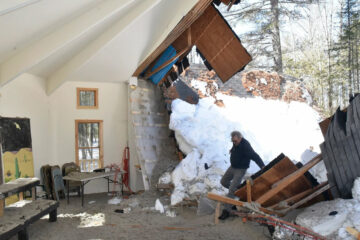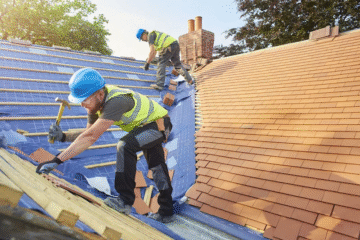Why Good Outdoor Lighting Is Essential for Your Building

Proper outdoor lighting enhances safety, boosts aesthetics, and ensures increased security around your building—particularly in rooftop areas where hazards like falls are possible. Complementing rooftop guardrails with strategic lighting not only highlights potential obstacles but also supports compliance with safety regulations. Whether for residential or commercial properties, good lighting improves visibility at night and creates a welcoming atmosphere. Discover how integrating outdoor lighting with rooftop guardrail systems can safeguard your building while elevating its visual appeal.
Enhancing Safety Across the Premises
Good outdoor lighting prevents accidents by illuminating walkways, entrances, and staircases. It makes navigation easier for occupants and visitors at night or during poor weather. Combined with protective elements like a rooftop guardrail, it ensures a safer environment. Bright exteriors reduce the risk of tripping or falling significantly. Consistent lighting also helps emergency responders navigate the property during critical moments. Safety remains a principal justification for strategic lighting outside buildings.
Deterring Unwanted Intrusions Effectively
A well-lit exterior discourages trespassers and criminal behavior. Bright lighting makes it difficult for intruders to approach unnoticed, reducing potential threats. Motion-activated lights enhance security without wasting energy. Proper placement near entries and blind spots increases property visibility. Combined with surveillance systems, lighting creates a secure atmosphere. This visible deterrent encourages a perception of control and vigilance. A secure building starts with a thoughtfully illuminated perimeter.
Supporting Surveillance Systems
Lighting complements security cameras by improving image clarity and coverage. It allows cameras to capture clearer visuals in the dark. This ensures better identification during incidents. Reliable illumination supports proactive monitoring and reduces blind spots. Nighttime footage becomes more useful with strategically placed lighting. Better visuals result in more effective investigations if incidents occur.
Highlighting Architectural Features
Exterior lights emphasize the structure’s unique design. They bring aesthetic value, especially at night, where shadows and highlights add depth. Architectural uplighting draws attention to columns, textures, or entrances. Path lighting frames landscaping features elegantly, increasing curb appeal. A well-illuminated building looks more refined and attractive. This influences first impressions among clients or visitors. Good lighting underlines a property’s elegance and professionalism after sundown.
Adding Brand Identity and Recognition
Customizable lighting supports branding by highlighting logos or corporate colors. Illumination creates visual consistency with a company’s identity. It also enhances recognizability from a distance. Well-lit signage draws attention even after office hours. This provides continued brand exposure. Intentional lighting makes commercial properties stand out in competitive environments.
Increasing Functionality and Comfort
Strategically placed lights extend the usable hours of outdoor areas. Patios, pathways, and parking lots stay functional after dark. Staff and guests can navigate and use the space longer. Whether for walks, conversations, or outdoor meetings, lighting adds flexibility. It also contributes to ambiance and comfort. A thoughtfully lit exterior promotes relaxation and hospitality outdoors. Efficient illumination encourages everyday use of exterior zones.
Supporting Energy-Efficient Practices
Modern outdoor lighting uses LED technology and smart sensors. These reduce energy consumption without sacrificing brightness. Timers and motion sensors prevent unnecessary usage. Energy-efficient lighting lowers electricity bills. Buildings become more sustainable and environmentally responsible. It also aligns with green certification goals or corporate sustainability initiatives.
Meeting Compliance and Regulations
Many building codes require adequate exterior lighting around public or commercial properties. Compliance avoids legal issues and potential fines. Regulations often outline illumination levels and coverage areas. Meeting these standards protects both the property owner and occupants. Following lighting codes ensures accessibility and safety. It also demonstrates responsible facility management. Proactive lighting design shows attention to legal and ethical responsibilities.
What are the key safety benefits of installing edge protection systems?
Installing edge protection systems significantly reduces the risk of falls from heights, which is one of the leading causes of workplace injuries. These safety barriers provide secure boundaries, ensuring that maintenance personnel and other workers can move around rooftops safely without the risk of accidental slips or missteps.
How do different designs influence the effectiveness of safety barriers?
The effectiveness of safety barriers depends largely on their design. Freestanding models avoid rooftop penetration, preserving waterproofing, while fixed systems offer robust, permanent protection. Modular options allow flexibility and easy installation, ensuring the best fit for various building layouts and safety needs over time.
What factors should be considered when choosing a rooftop safety solution?
When selecting a rooftop safety solution, it’s essential to consider the roof’s load capacity, the type of work being performed, weather exposure, and compliance with local safety codes. Additionally, ease of installation and maintenance requirements play a crucial role in ensuring long-term effectiveness and worker safety.
How do maintenance needs impact long-term rooftop safety?
Regular inspections and maintenance of protective systems are vital to ensure ongoing safety. Corrosion, loose fittings, or structural damage can compromise barrier integrity. Establishing a schedule for checks and promptly repairing any wear ensures the system continues to meet safety standards and protects everyone accessing the area.




